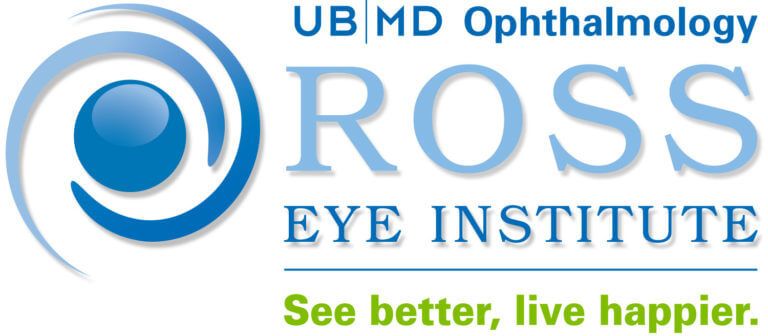WHAT TO EXPECT
- ROSS EYE INSTITUTE -
Ross Eye Institute's Orthoptic Program
Orthoptics is an allied health profession, specializing in the evaluation and treatment of disorders of visual function, eye movements, eye alignment and binocular vision in children and adults. The orthoptist carries out a series of diagnostic tests and measurements on patients with visual function deficits, including amblyopia (lazy eye), strabismus (misaligned eyes) and diplopia (double vision), and participates with the ophthalmologist in the design and implementation of a treatment plan. In some situations, the orthoptist carries out the treatment, and in others the patient is treated medically or surgically by the ophthalmologist, while the orthoptist is responsible for monitoring the patient’s condition and progress.
The role of the orthoptist demands intelligence, sound judgment, intellectual honesty, and the ability to relate well to patients of all ages, but particularly infants, children and the elderly. Because of the nature of many disorders of visual function, most of the orthoptist’s patients are young children. While most of these children are otherwise active and healthy, some have associated physical, mental, or emotional disabilities.
Orthoptics offers opportunities for dynamic, motivated individuals who want to exercise or develop leadership ability, public speaking, creativity, teaching skills, clinical research skills, and medical writing and publication, in addition to patient care. This profession may at times combine elements of social work, education, patient advocacy, medical legal politics, and psychology, in addition to science and medicine!
What to Expect At Your Appointment
Whether a specialist visit or a routine eye exam, patients can expect that an appointment will take at least 1.5 hours, and may go over three hours depending on what testing and treatments you need. You are encouraged to bring food and water, especially if you are diabetic.
Please bring with you your distance glasses, any completed forms and notes (if available) from other ophthalmologists. When you arrive at your appointment, check in with the receptionist.
You will then see a technician. It is also likely that you may be examined by a resident physician when visiting the downtown location prior to seeing your doctor, as the Ross Eye Institute is an academic teaching institution for future ophthalmologists.
A Word On The Dilating Solution
If testing requires that you receive dilating drops, you may need to wait up to 45 minutes until you are ready for the next step. After your pupils are dilated, we may take photos of the back of your eye. You will likely not receive a prescription for glasses.
Pupils can remain dilated for many hours. You may not be able to focus, and may be light-sensitive. We recommend bringing someone to drive you home afterward.
An Education In Orthoptics At Ross Eye Institute
Overview
Ross Eye Institute is home to an Orthoptic Program, fully accredited by the American Orthoptic Council (AOC). The two-year course of study runs from September through August, year-round. Full-time attendance, Monday through Friday, is required, with three weeks of vacation per year. Successful graduates earn a Certificate of Completion from the Department of Ophthalmology, and are then qualified to sit for the national board examinations, given by the AOC. These examinations consist of a written exam, an oral exam and a practical exam. Those candidates successfully passing the board exams earn national certification, and are entitled to use the designation “C.O.” (Certified Orthoptist). They are also invited to join the American Association of Certified Orthoptists (AACO), a dynamic and active professional organization.
Our Educational Philosophy
At the REI, we recognize that everyone learns differently. We try our best to create the best learning environment for all, based on the following principles.
Collaboration, Not Competition
In the Pediatric Ophthalmology Division of the REI, we work hard to create a harmonious learning and work environment. Students are encouraged to work together as a team and to support each other. We attempt to approach teaching and learning with a positive attitude, encouragement, and a sense of humor! We strive to be flexible in our approach to each topic, and we are open to adapting teaching strategies to meet the needs of each individual student.
Emergencies Are Top Priority
Emergency patients need to be seen immediately. Very rarely, your appointment time or date may have to be moved in order to accommodate such emergencies. In these cases, we ask you – and thank you – for your patience.
Contact Us
We will get back to you as soon as possible.
Please try again later.
BUFFALO NIAGARA
F: 716-881-4349
Office Hours:
Monday - Friday: 8:00 am - 4:30 pm
SOUTHTOWNS OFFICE
F: 716-677-6507
Office Hours:
Monday - Friday: 8:00 am - 4:30 pm
BUFFALO NIAGARA
F: 716-881-4349
Office Hours:
Monday - Friday: 8:00 am - 4:30 pm
SOUTHTOWNS OFFICE
F: 716-677-6507
Office Hours:
Monday - Friday: 8:00 am - 4:30 pm


© 2024. Ross Eye Institute.
The Ross Eye Institute website makes every attempt to comply with The Americans with Disabilities Act (ADA) of 1990. If you are using a screen reader and are having problems using this website, please call for assistance.